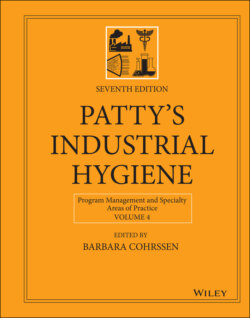Читать книгу Patty's Industrial Hygiene, Program Management and Specialty Areas of Practice - Группа авторов - Страница 62
6.2 International Labor Organization OHSMS
ОглавлениеThe ILO began its OH&S management system development activities shortly after ISO elected not to pursue development activities in this area in late 1996. The ILO's SafeWork division lead the agency's effort with the initial step of contracting a research study with the IOHA on OHS and EMS in use or development in the late 1990s (23). With the study findings in hand, the ILO formed a 21‐person working group of experts to develop the standard that followed its tripartite structure with 7 experts each from government, labor, and industry. The working group efforts culminated with a two‐week meeting in 2001 in Geneva where the standard was primarily written (73).
As with OHSAS 18001 and ISO 14001, the ILO OHS management system standard has front‐end sections that address scope and context issues, with the meat of the standard contained in Section 3, organized within the following five sections:
Policy
Organizing
Planning and Implementation
Evaluation
Action for Improvement.
A unique feature of the ILO's OHSMS is that contains a model that governments or nation‐state standards developers can follow in the development of OHSMS standards unique to individual countries or industries. This section is titled “A national framework for occupational safety and health management systems.” A schematic of this structure is show in Figure 6.
FIGURE 6 The ILO framework schematic.
Strictly speaking, the ILO OHSMS is not an auditable standard, but rather it is a guideline with recommendations. It contains a mixture of “should” and “shall”‐based clauses that makes auditing difficult. Its use in third‐party certification schemes is not precluded, but its introduction states that its “application” does not require certification.
